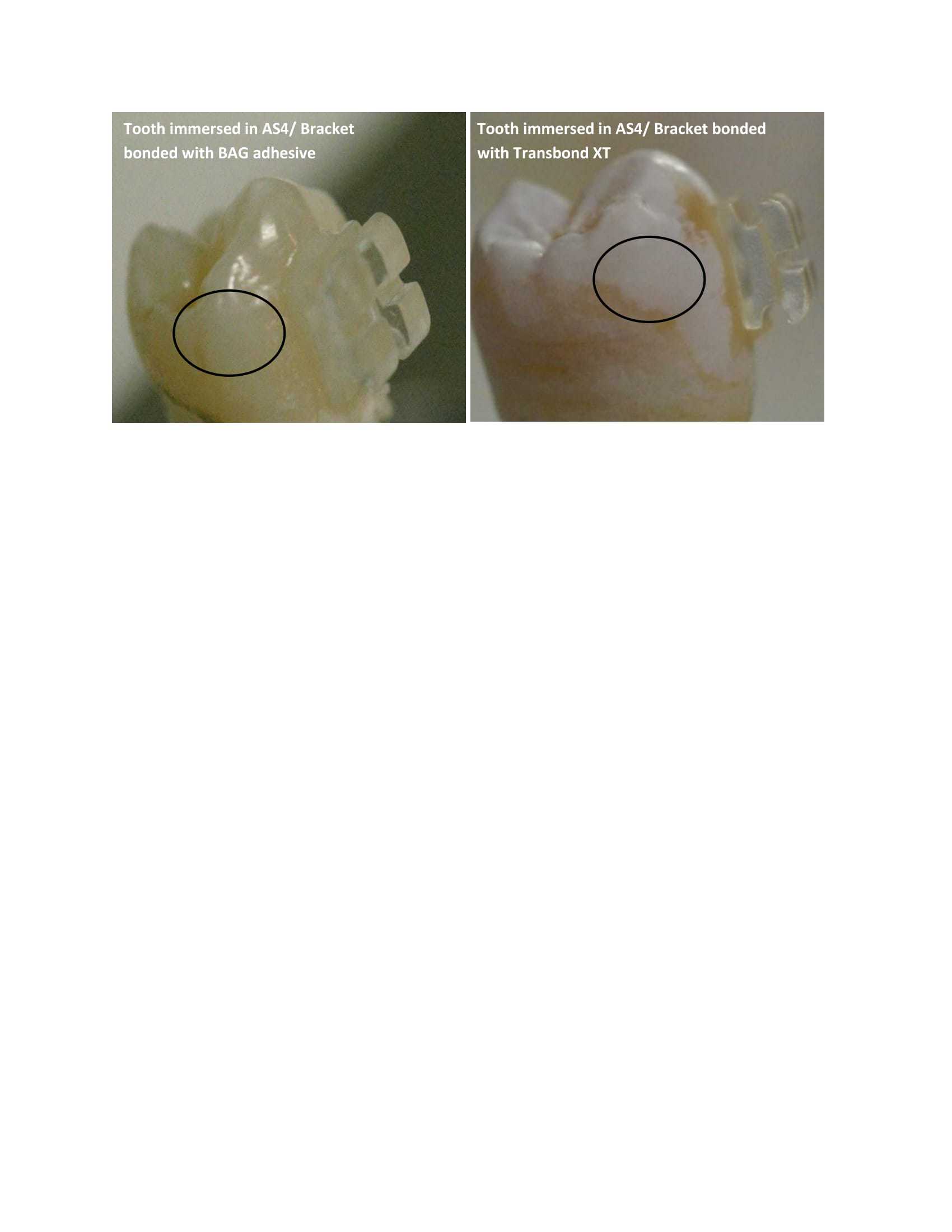IADR Abstract Archives
Characterisation and Preventive Effect of a Novel Bioactive Orthodontic Adhesive.
Objectives: To characterise a newly designed bioactive glass in orthodontic adhesive and investigate its effect on demineralisation.
Methods: A novel, high fluoride, high phosphate and low sodium containing, bioactive glass (BAG) was prepared via the melt quench route and incorporated into a light curable resin at 80% loading. Ninety discs, 10mm diameter and 1mm thick, were studied for 6 months in Tris buffer pH=7.3 (TB), artificial saliva pH=7 (AS7) and artificial saliva pH=4 (AS4), for ion release using ion selective electrode (ISE) and inductively coupled plasma optical emission spectroscopy (ICP-OES); and for apatite formation using X-ray diffraction (XRD), Fourier transform infrared spectroscopy (FTIR), magic angle spinning-nuclear magnetic resonance (MAS-NMR) technique and the scanning electron microscope (SEM). Orthodontic brackets were bonded to premolar teeth using either the BAG adhesive or TransbondTM XT (3M Unitek) as a control. The specimens were scanned using MuCAT2 X-ray microtomography (XMT), immersed individually in AS4 for 24 hours and rescanned. The amount of mineral loss after acid dissolution was calculated from the reconstructed XMT images of the two scans.
Results: The BAG adhesive released up to 130ppm F-, 2500ppm Ca2+ and 200ppm PO43-. -. Ion release in TB and AS4 were higher than in AS7. The adhesive is forming fluorapatite in all solutions. The potential for apatite formation in TB and AS4 were similar but the dissolution rate was higher in AS4 than TB and AS7. Enamel mineral loss was significantly lower in teeth with the bracket cemented with the BAG adhesive than that with TransbondTM XT as measured from the subtracted XMT images.
Conclusions: As the novel BAG orthodontic resin has long term release of therapeutic ions under acid attack and forms fluorapatite, it reduces the amount of enamel mineral loss. Consequently, it may be used as a smart adhesive to reduce white spot lesion formation around orthodontic bracket in vivo.
Methods: A novel, high fluoride, high phosphate and low sodium containing, bioactive glass (BAG) was prepared via the melt quench route and incorporated into a light curable resin at 80% loading. Ninety discs, 10mm diameter and 1mm thick, were studied for 6 months in Tris buffer pH=7.3 (TB), artificial saliva pH=7 (AS7) and artificial saliva pH=4 (AS4), for ion release using ion selective electrode (ISE) and inductively coupled plasma optical emission spectroscopy (ICP-OES); and for apatite formation using X-ray diffraction (XRD), Fourier transform infrared spectroscopy (FTIR), magic angle spinning-nuclear magnetic resonance (MAS-NMR) technique and the scanning electron microscope (SEM). Orthodontic brackets were bonded to premolar teeth using either the BAG adhesive or TransbondTM XT (3M Unitek) as a control. The specimens were scanned using MuCAT2 X-ray microtomography (XMT), immersed individually in AS4 for 24 hours and rescanned. The amount of mineral loss after acid dissolution was calculated from the reconstructed XMT images of the two scans.
Results: The BAG adhesive released up to 130ppm F-, 2500ppm Ca2+ and 200ppm PO43-. -. Ion release in TB and AS4 were higher than in AS7. The adhesive is forming fluorapatite in all solutions. The potential for apatite formation in TB and AS4 were similar but the dissolution rate was higher in AS4 than TB and AS7. Enamel mineral loss was significantly lower in teeth with the bracket cemented with the BAG adhesive than that with TransbondTM XT as measured from the subtracted XMT images.
Conclusions: As the novel BAG orthodontic resin has long term release of therapeutic ions under acid attack and forms fluorapatite, it reduces the amount of enamel mineral loss. Consequently, it may be used as a smart adhesive to reduce white spot lesion formation around orthodontic bracket in vivo.

